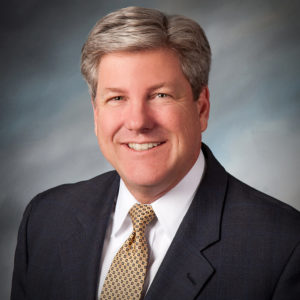![]()
Originally published on ThinkAdvisor.com, March 8, 2016
By Knut A. Rostad
Researchers at the University and Chicago and Minnesota last week published an extraordinary study on broker misconduct.
The report is extraordinary in that the authors say the study demonstrates clear and widespread broker misconduct – misconduct that is effectively enabled by certain firms which employ far higher rates of brokers with published multiple infractions. The research is extraordinary, too, in its policy recommendation that puts the duty to address this wrongdoing on investors.
And it’s extraordinary as well in the way the researchers inexplicably call ‘brokers’ ‘financial advisers.’
The findings, based on what the authors describe as a “novel data base” of the entire universe of brokers from 2005 to 2015, reveal broad-based misconduct among over 650,000 FINRA registered brokers who manage over $30 trillion in assets. Among the findings:
Among the 1.2 million records reviewed between 2005 and 2015, 7% have misconduct records.
Researchers focused on just six of 23 situations disclosed by brokers believed to be “indicative” of broker misconduct.
The rates of misconduct are widely disparate among firms. Some firms far exceed the 7% industrywide misconduct rate. Oppenheimer led with the highest rate of misconduct at 20%. First Allied Securities and Well Fargo Advisers and UBS Financial Services followed with rates of 18%, 15% and 15%, respectively.
Brokers with multiple disclosures are key: 38% of brokers with misconduct records are “repeat offenders.” These brokers “are five times more likely to engage in misconduct” than ‘average’ brokers, the authors say, noting that the data “strongly suggests that misconduct does not arise due to bad luck or random complaints by dissatisfied customers.”
Still, misconduct disclosures do not necessarily result in dismissal, the study found. More than half of brokers who disclose a violation in one year remain at their job the following year. And of those brokers who do leave their job, 44% are hired somewhere else within the industry inside a year.
Disparate rates of misconduct are deemed clearly associated with proactive hiring and firing practices. The study notes certain firms employ substantially more brokers with records of “misconduct than others,” and that brokers “working for firms whose executives and officers have records of misconduct are more than twice as likely to engage in misconduct.”
Columbia Law School law professor John Coffee told Wealthwatch that this data is “eye-opening” and suggests that some firms’ business model is “to attract the broker who can generate high revenue at the cost of repetitive disciplinary violations.”
The authors also discuss how firms who attract brokers who are “repeat offenders” can continue to attract new customers. The authors say the best explanation does not involve any shortcoming of the firms themselves, nor does it involve any possible regulatory shortcomings. The authors do not recommend, for example, that firms be required to change their ways.
Instead, the authors blame investors, first as a hypothesis. “One potential reason why firms with a bad reputation can survive is if some customers are not very sophisticated,” the authors write. Then, as a far stronger statement about what should be done to address this misconduct:
“Our findings suggest that a natural policy response to lowering misconduct is an increase in market transparency and in policies helping unsophisticated consumers access more information.”
Further, as noted above, the study findings are based on FINRA-registered brokers with 1.2 million records who manage over $30 trillion in assets. In the first sentence of the report the authors use the nomenclature “financial adviser” to mean “broker” and explain in a footnote, “We will use the term ‘financial adviser’ …. to refer to investment professionals registered with FINRA.”
This is curious in light of how regulators themselves use very specific nomenclature to distinguish advisers and brokers. FINRA’s web page discussing its mission mainly references ‘broker-dealers’ and delineates ‘investment advisers.’ Likewise, as seen in the 2011 SEC staff study discussing the differences between and roles of broker-dealers and investment advisers, the SEC staff carefully delineates between fiduciary advisers and brokers.
While the study authors say they “are careful to make distinctions about additional registration,” these distinctions are not clear. The basis on which the authors identify “investment advisers” is from those brokers who have completed a Series 65 or 66 exam. There is no explanation for this methodology and why this is a reliable measure. Further, there is no consideration for the nature of the dual-registrant businesses, or consideration of the importance of examining investment advisers who are only registered investment advisers – and not also registered as brokers.
The study’s authors appear to blame investors for the high levels of misconduct and, as an apparent result, do not recommend any new and stronger concrete practices firms should follow. Then throughout the study FINRA registered investment professionals are branded as “financial advisers” while solely registered investment advisers are excluded from the study entirely. Extraordinary, indeed.

